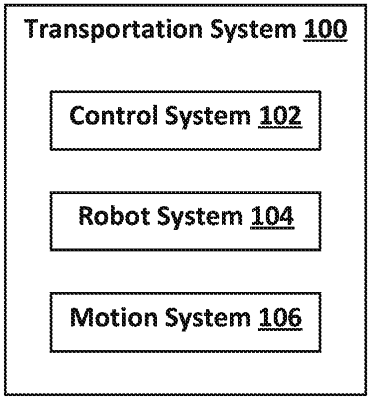| CPC B65G 47/90 (2013.01) [B25J 9/0093 (2013.01); B61C 13/04 (2013.01); B65G 35/08 (2013.01); B65G 47/38 (2013.01); B65G 2203/0266 (2013.01); B65G 2207/02 (2013.01)] | 9 Claims |

|
1. An industrial transportation system, comprising:
a control system;
one or more movers that each move independently in response to mover control signals output by said control system, each of the movers comprising a reversible adhesion surface that provides reversible adhesion; and
a robot system configured to load one or more associated items on the reversible adhesion surface of respective movers and unload the one or more associated items from the reversible adhesion surface of respective movers in response to robot control signals output by said control system,
wherein: (i) the reversible adhesion of the reversible adhesion surface is activated during loading of the one or more associated items onto the reversible adhesion surface by the robot system by a first shear force acting between the one or more associated items and the reversible adhesion surface of the mover; and (ii) the reversible adhesion of the reversible adhesion surface is deactivated during unloading of the one or more associated items from the reversible adhesion surface by the robot system by a second shear force acting between the one or more associated items and the reversible adhesion surface of the mover;
said first shear force generated parallel to the reversible adhesion surface in a first direction in response to said control system outputting said mover control signals and said robot control signals to induce relative movement between the one or more associated items and the reversible adhesion surface of the mover to overcome a first friction force between the one or more associated items and the reversible adhesion surface;
said second shear force generated parallel to the reversible adhesion surface in a second direction that is opposite the first direction in response to said control system outputting said mover control signals and said robot control signals to induce relative movement between the one or more associated items and the reversible adhesion surface of the mover to overcome a second friction force between the one or more associated items and the reversible adhesion surface.
|